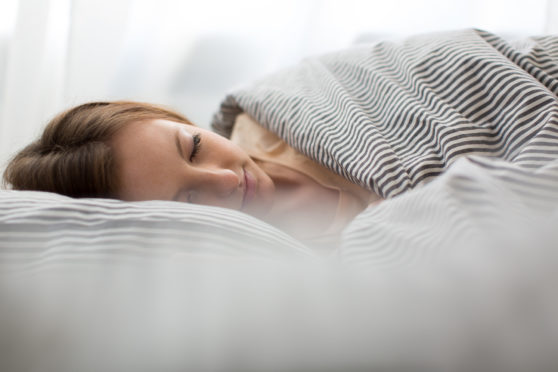
As many as 16 million Brits suffer from sleep deprivation.
A whole industry has grown up around our obsession with getting our eight hours, from sleep apps to countless self-help books.
When nutritionist Rob Hobson suffered from chronic insomnia, he used his medical knowledge to come up with a three-point action plan – Behaviour, Environment and Diet. In his new book, The Art Of Sleeping, he looks at how what we eat, combined with good bedtime habits and sleeping environment, is the key to a good night’s rest.
He said: “I was a little apprehensive about writing the book at first, as I’m not a sleep expert, psychologist or researcher in this area.
“However, I’m someone who has really struggled to sleep and I’m a health professional so I can understand and translate the scientific research on the topic.
“Writing this book gave me a way to formulate a methodical approach to sleeping well that I hope will help others in their quest for a good night’s kip.
“As a health professional, I am very aware of the link between diet and disease.
“Learning more about the influence sleep deprivation can have on these diseases made me realise I had to do something about my own lack of sleep and treat it in the same way as I would diet and exercise. “
Rob believes sleep should be seen as one of the main pillars of health alongside diet and exercise.
He said: “Sleep is still considered to be something to put up with, and very few people recognise the wider implications it can have on our health.
“Yet establishing a set pattern of sleep is also tricky, given our frenetic lifestyles that, for many, involves burning the candle at both ends as they try to put the hours in at work as well as training hard and socialising both for work and pleasure.
“Social media not only dominates the way many of us behave but can impact on our mental health.”
During sleep the brain processes information, memory and experiences. The body during this time also utilises hormones to help with growth and repair of tissues as well as producing skin cells, red blood cells and immune cells, which are all relevant to maintaining good health.
The short-term effects of not sleeping well are linked to fatigue and can impact on our ability to perform daily tasks as we struggle with attention, concentration, creativity, insight, memory and decision making.
Research has suggested that chronic sleep deprivation may increase the risk of diabetes, elevate blood pressure and lead to poor mental health. Early and ever evolving research has also shown that a lack of sleep may even impact on weight by way of the hormones that regulate appetite.
Alongside establishing health sleep rituals, Rob says making changes to your diet will make a lasting impact.
He says: “Caffeine after midday and high sugar intake both affect sleep quality as can alcohol which impacts on deep REM sleep.
“Avoid eating too close to bedtime, especially if you are prone to indigestion. Keeping meals light and including both lean protein and carbohydrates whilst avoiding high fat foods can also help.
“Carbohydrates help with the uptake of tryptophan into the brain, which is used to make sleep hormone melatonin.”
The Art Of Sleeping, Rob Hobson, HQ, £9.99

Enjoy the convenience of having The Sunday Post delivered as a digital ePaper straight to your smartphone, tablet or computer.
Subscribe for only £5.49 a month and enjoy all the benefits of the printed paper as a digital replica.
Subscribe